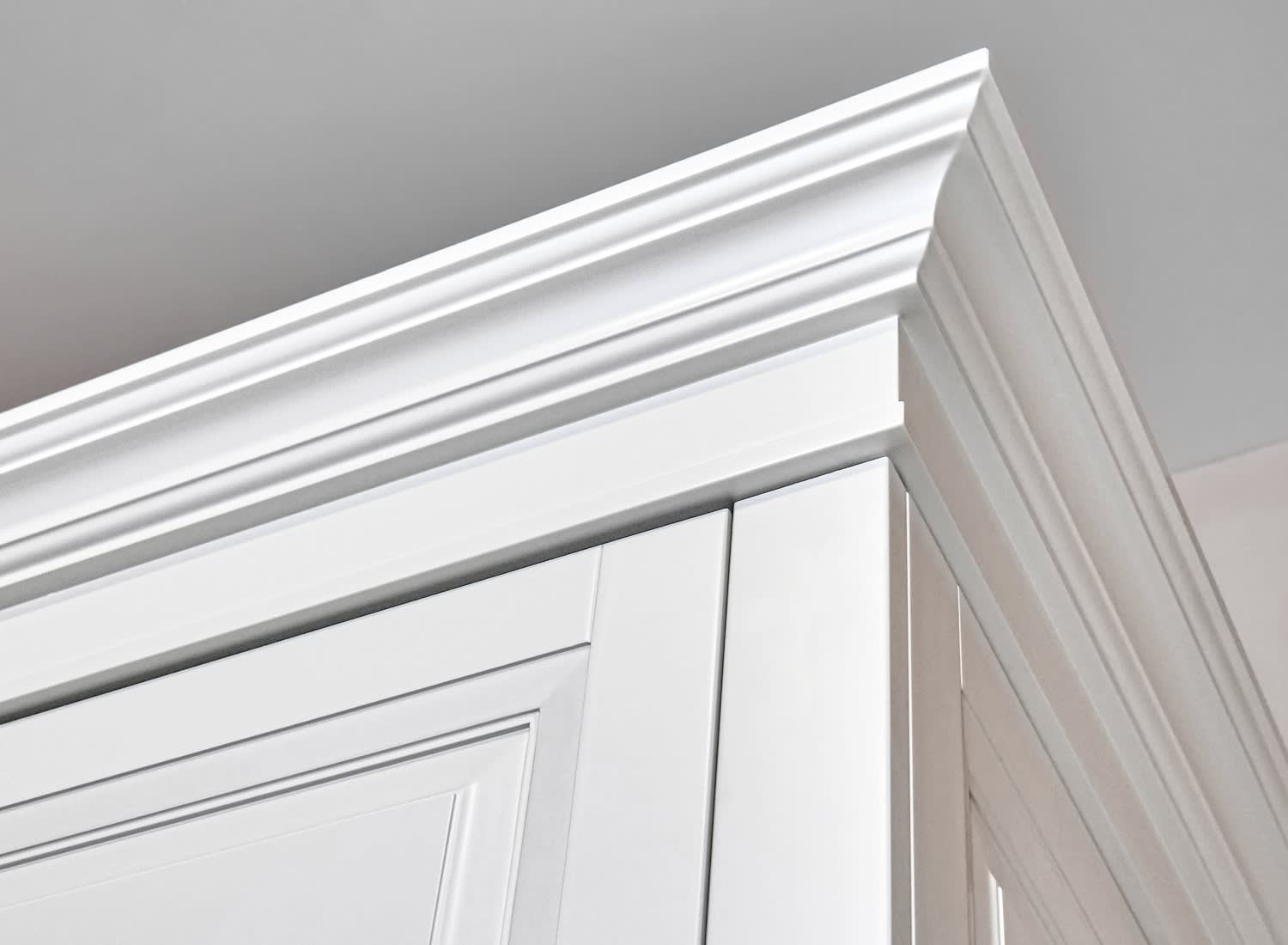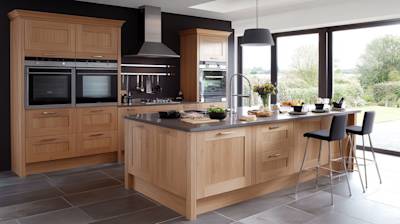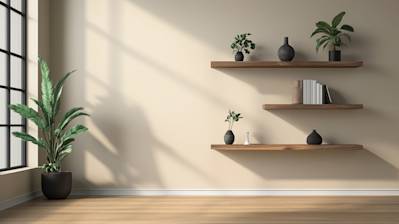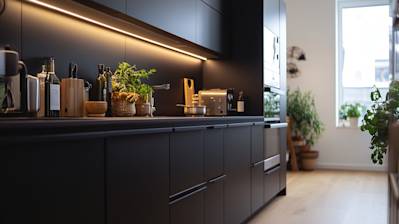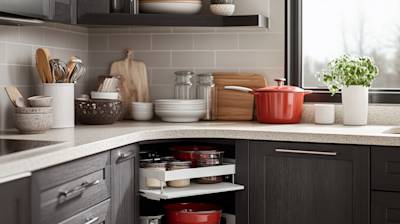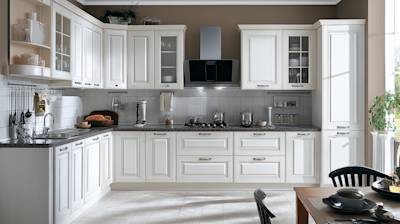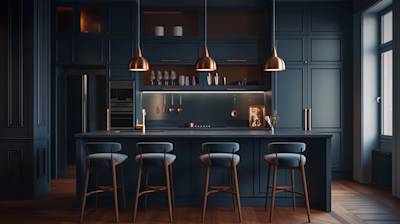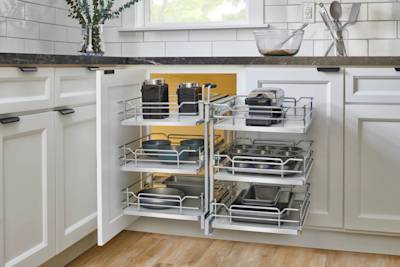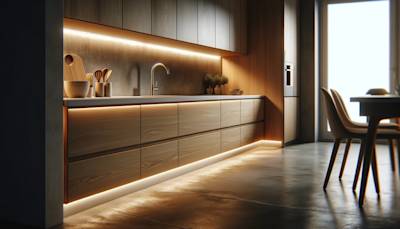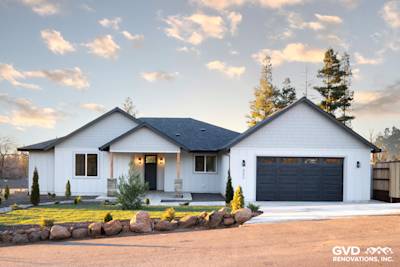Leaving a lasting impression in any room is often achieved through the finer details. One such detail that transforms your rooms with an added touch of sophistication is the use of cabinet crown molding. Accentuating your cabinet dimensions while promoting a sleek and polished look, cabinet crown molding serves as a functional yet stylish piece to enhance your interior. But what exactly is cabinet crown molding, how is it installed, and what makes it an excellent home improvement project?
Understanding Cabinet Crown Molding
Cabinet crown molding refers to an aesthetic feature added to the upper edges of cabinets. It adds elegance and sophistication, transforming an ordinary cabinet into a stunning architectural masterpiece. This home improvement project not only boosts the aesthetic appeal of cabinets but also increases the overall value of your home. Now that you understand cabinet crown molding better, let's delve deeper into its types and how they offer unique charm.
The Types of Crown Molding
There are different types of cabinet crown molding, each offering a unique appeal and aspect of visual interest. The variations come in designs, sizes, and profiles, permitting you to select an option that suits your style and budget. They include:
- Dentil Molding: Characterized by a series of small blocks, dentil molding produces a striking, detailed look. It's perfect for traditional kitchens with rich ornamental appeal.
- Egg and Dart Molding: As the name suggests, this molding type features an egg-shaped design, followed by a dart-like design. The pattern remains popular in both vintage and contemporary kitchens.
- Scotia Molding: Known for its concave design, Scotia molding is often used in conjunction with other moldings to create complex, layered effects.
Note that the variations are not limited to these options; there are numerous cabinet crown molding designs to explore, each offering a unique charm.
Why Choose Cabinet Crown Molding?
The options for styles and design elements are nearly limitless with crown molding designs. It creates a seamless transition from cabinet to ceiling, producing a furnished look while giving the illusion of higher ceilings. Additionally, crown molding can cover unsightly cabinet seams or damaged cabinet tops, and add a touch of class to your cabinets. While the benefits are aesthetically clear, now let's understand the step-by-step guide on how to install cabinet crown molding.
How to Install Cabinet Crown Molding
Installing cabinet crown molding may seem like a daunting task, but with the right tools and a comprehensive guide, you can do it yourself.
Step 1: Measure Your Cabinets
Take accurate measurements of your cabinets' length, breadth, and depth. Be sure to note them down for later reference.
Step 2: Choose Your Molding
Explore different cabinet crown molding styles and decide on the one that complements your kitchen's overall design.
Step 3: Cut the Molding
Using a miter saw, cut your molding pieces accordingly. Remember to ensure you have extra length for room for error.
Step 4: Install the Molding
Align the molding with the top edge of your cabinets, then secure it using a pneumatic nail gun. Ensure it's level and straight.
Step 5: Caulk and Paint
Finish up by caulking any gaps and painting your molding to match the cabinets.
It's crucial to know that meticulous preparation is key to any successful cabinet crown molding installation. While it might seem like a small detail, well-executed cabinet crown molding can dramatically alter the entire look of your kitchen.
Working with Professionals
In case you're looking to install cabinet crown moldings but lack the right skills or time, you would benefit greatly from hiring professionals. This way, you can enjoy flawless installation without much hassle, leading to stunning kitchen aesthetics and improved home value. It's a worthy consideration for enhancing the beauty of your cabinets and upscaling your kitchen.
Cabinet crown molding is a subtle yet impactful addition to your home's aesthetics, a perfect blend of functionality and style. Whether you choose to DIY or hire a professional, remember that this seemingly small addition can make a massive difference to the overall finish and design of your kitchen or living space.
Materials Used in Cabinet Crown Molding
Several materials are commonly used in creating cabinet crown molding:
- Hardwoods: Often used for traditional or high-end cabinets due to their durability and the beauty of natural wood grain.
- Medium-Density Fiberboard (MDF): A less expensive alternative to hardwood, MDF is easy to work with and is often used in contemporary cabinets.
- Plastics or Polyurethane: Lightweight and resistant to moisture, these types of moldings are ideal for areas like the bathroom or laundry room.
Styles of Cabinet Crown Molding
There are various styles of cabinet crown molding, each contributing a unique aesthetic to your cabinets. Let's take a look at some of the most popular styles:
Traditional Crown Molding
Featuring beautifully carved details, traditional crown molding provides a sophisticated and timeless look. Despite being popular in classic or traditional-style kitchens, it can also work well in transitional design schemes.
Contemporary Crown Molding
Contemporary designs are typically minimalist, featuring simple and sleek lines. Such molding types are ideal for modern kitchens with clean lines and less ornamentation.
Shaker Style Crown Molding
This style is closely associated with the Shaker-style cabinet design, known for its simplicity and functionality. Recognizable by its flat panel and framed profile, Shaker style crown molding blends well with rustic or country kitchens.
Frequently Asked Questions About Cabinet Crown Molding
One of the most popular ways to accentuate your kitchen cabinets is through the use of cabinet crown molding. This guide will address some of the common questions that people often have regarding cabinet crown molding, from installation to materials and everything in between.
What is the purpose of cabinet crown molding?
Cabinet crown molding is a decorative trim that is installed at the top of the cabinets. It adds a level of sophistication and polish to the overall look of your kitchen. It is also an opportunity to inject a bit of personal style into your cabinet design.
Does cabinet crown molding need to match the cabinets?
Not necessarily. While matching the cabinet crown molding to your cabinets provides a seamless, cohesive look, you can also use a contrasting color or material to make the molding stand out.
What materials are used for cabinet crown molding?
Cabinet crown molding can be made from a wide range of materials, including wood, medium-density fiberboard (MDF), polyvinyl chloride (PVC), or polyurethane. Your choice of material will depend on your budget and the style you're going for.
Is it difficult to install cabinet crown molding?
The difficulty of installing cabinet crown molding largely depends on your handyman skills and the complexity of your cabinet design. For simple designs, a DIY approach may be possible. However, for more complex or high-end designs, it's recommended to enlist the help of a professional.
What are some popular styles of cabinet crown molding?
Some popular styles of cabinet crown molding include classical, which features a rounded, decorative shape, modern, which tends to be more straightforward and sleek, and rustic, which gives that worn, country look.
Can you put cabinet crown molding on existing cabinets?
Yes, you can add cabinet crown molding to existing cabinets. It's a great way to refresh the look of your kitchen without going through a full remodel. But again, depending on the complexity of the design, you may want to hire a professional to ensure it's done correctly.
How do you clean cabinet crown molding?
The cleaning method for your cabinet crown molding will depend on the material it's made from. In general, you can use a soft, damp cloth to wipe it down. Avoid using abrasive cleaners which can damage the finish. For stubborn stains or dirt, it's best to refer to the manufacturer's instructions.
How long does it take to install cabinet crown molding?
The time it takes to install cabinet crown molding can vary greatly depending on the size and design of your cabinets, as well as the experience level of the person doing the installation. It could take anywhere from a few hours to a few days.
What types of finishes are available for cabinet crown molding?
Cabinet crown molding can come in a variety of finishes, ranging from painted, stained, or unfinished. The finish you choose will depend on your personal aesthetic and the overall design of your kitchen. Remember, the finish can drastically change the entire look of your kitchen, so choose wisely!
Is cabinet crown molding a trend or a classic?
Cabinet crown molding is a classic design element in kitchen cabinetry. Although trends in design and materials may change, cabinet crown molding is a timeless addition that adds a high-end look to any kitchen.
Pros and Cons of Cabinet Crown Molding
Pros of Installing Cabinet Crown Molding
Enhances Aesthetic Appeal
Cabinet crown molding can significantly boost the aesthetic sophistication of your kitchen or bathroom. Here are some ways how:
- Visual Interest: Crown molding introduces a unique design element that breaks up the usual flat lines found in many modern homes. This added detail sets your cabinets apart, giving your rooms a more custom and upscale feel.
- Elegance: Crown moldings have a traditional and elegant charm, adding a touch of luxury to your space. They bring in an old-world feel into a modern room.
- Personalization: They are available in various styles, sizes, and materials. This variety allows homeowners to choose a design that best suits their taste, effectively personalizing the space.
Increases Property Value
Cabinet crown molding could heighten your home's value. Here's how:
- Increased Appeal: As a design feature, crown molding is often appreciated by potential buyers, making your home more appealing on the market.
- Perceived Value: By adding a "custom" feel to a room, crown molding can increase the perceived value of your home.
Cons of Installing Cabinet Crown Molding
Installation Difficulty
There are several challenges that you may experience when installing cabinet crown molding:
- Technical Skills Needed: Installing crown molding can be a complex task. Without proper skills or tools, it can be incredibly difficult.
- Time-Consuming: The process can also be very time-consuming, particularly if it involves numerous cabinets.
- Cost:Often, the complexity of the task necessitates a professional installation, which could significantly increase the total cost.
Height Restrictions
Crown molding could pose issues with vertical space in your home. Here's how:
- Low Ceilings: In homes with low ceilings, crown moldings may not be an ideal fit. They could potentially make the room feel smaller.
- Cabinet Access: Cabinet crown molding may also impede access to upper cabinets, causing inconvenience when reaching for higher items.
Maintenance Difficulties
Cabinet crown moldings demand routine maintenance to sustain their appearance. These are the possible challenges:
- Dust and Grime: Over time dust, grime and grease (especially in kitchens) can accumulate on detailed crown moldings and can be daunting to clean.
- Repainting and Refinishing: If your crown molding is painted or stained, upkeep may include periodic repainting or refinishing.
Summary
With Cabinet Crown Molding, you can effortlessly uplift the aesthetic appeal of your kitchen. It provides a royal touch and transforms otherwise normal looking cabinets into exquisite pieces. It is an affordable and easy method for refining your space, giving it the high-end look everyone craves for.
There's no contest when it comes to the architectural detail that Cabinet Crown Molding adds to your home. It is an effective way to increase the overall value of the property. Aesthetically pleasing and functional, it adds an element of completion, making your cabinetry look like it's custom-made.
Installing Cabinet Crown Molding can be a fun, simple DIY project that instantly elevates your home's interior. It is a testament to your exceptional style and refined taste. So whether you are renovating, remodeling or just looking for a quick update, consider adding this wonderful design feature to your cabinetry.
About GVD Renovations & Remodeling
Welcome to GVD Renovations & Remodeling! Located in the heart of Sacramento, CA, we pride ourselves on transforming homes and lives with our expert craftsmanship and dedication to quality renovation work. From intricate kitchen remodels to extensive home repairs, our experienced team always delivers exceptional results. We take great pleasure in ensuring our clients' homes reflect their style and personality while providing lasting enjoyment. When you choose GVD Renovations & Remodeling, you're choosing a trusted partner in making your dream home a reality.
Tags: Cabinet Crown Molding, Home Renovation, Interior Design,




